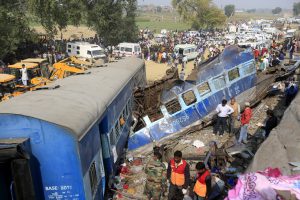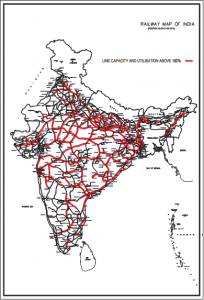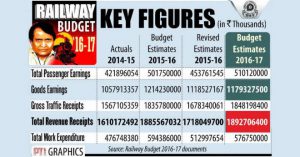Around 150 people died in the recent train accident near Kanpur. The passengers of Indore-Patna Express were in deep slumber, when some 14 coaches of the train were derailed, apparently due to a rail fracture. It is one of the worse rail accidents of recent times, almost equally in casualties as that of Gyaneshwari Express in which some 150 had died in 2010, when the train had been derailed by Maoists in West Bengal. The scale of deaths and injuries makes the current accident, one of the worst in the history of Indian Railways. Sadly, going by the things as they are, this accident won’t certainly be the last “major one” in India’s transport sector.
times, almost equally in casualties as that of Gyaneshwari Express in which some 150 had died in 2010, when the train had been derailed by Maoists in West Bengal. The scale of deaths and injuries makes the current accident, one of the worst in the history of Indian Railways. Sadly, going by the things as they are, this accident won’t certainly be the last “major one” in India’s transport sector.
The travesty is that after every such incident, a set of actions/reactions follow almost in an autonomous mode. The opposition will bay for blood, the experts will decry the state of railways, the media will highlight all the unfulfilled promises and commitments, and the rail minister will set up a committee to investigate, promising strictest action possible. As the days pass and the dust settles down, the accident will become a statistic, invoked only in times of similar accidents, largely as an illustration of how “no lessons are ever learned”.
But then running Indian Railways is by no means an easy task. Sample these stats;  railways have a network of more than 64000 kms in length. It runs around 7000 commuter trains; 12000 long-distance trains and 6000 freight trains this network daily. Around 22 million passengers commute over the network each day. That is the sheer size and scale of this network. Given, the sheer scale, an accident like this in a few years should not raise much eyebrows, after all even Six Sigma allows you a few faults in a million, doesn’t it? But it does and should, because the faults in Indian Railways system can have ghastly repercussions. Imagine, it was a rail fracture in the Kanpur accident (a crack that is a few inches wide on the metal track) that killed so many and injured so many more. Faults on railways are always a killer. Thus, there is just no excuse for them.
railways have a network of more than 64000 kms in length. It runs around 7000 commuter trains; 12000 long-distance trains and 6000 freight trains this network daily. Around 22 million passengers commute over the network each day. That is the sheer size and scale of this network. Given, the sheer scale, an accident like this in a few years should not raise much eyebrows, after all even Six Sigma allows you a few faults in a million, doesn’t it? But it does and should, because the faults in Indian Railways system can have ghastly repercussions. Imagine, it was a rail fracture in the Kanpur accident (a crack that is a few inches wide on the metal track) that killed so many and injured so many more. Faults on railways are always a killer. Thus, there is just no excuse for them.
Realising the dire state of the railways, the minister Suresh Prabhu had proposed to invest ₹ 1,27,000 crore over 2015-19 in safety work, which includes track renewal. In addition to ₹1,02,000 crore to be spent on the locomotives, coaches, etc. And such steps were not the first ones. The previous government had appointed a committee under Anil Kakodkar to enhance railway safety.
Yet, in spite of all the ‘supposed’investment in safety and all the great plans, the real problem lies in the very manner in which the railways is run. The way the organisation (for a want of a better term) is structured, it is doomed for disaster and going bust in the days  to come. Indian Railways (IR) is right now like a patient that is afflicted with tuberculosis, the symptoms are all there. But if we only concentrate on the manifestation and ignore the ailment, the patient is going to eventually die. The prognosis for IR is similarly dour. And here’s why:
to come. Indian Railways (IR) is right now like a patient that is afflicted with tuberculosis, the symptoms are all there. But if we only concentrate on the manifestation and ignore the ailment, the patient is going to eventually die. The prognosis for IR is similarly dour. And here’s why:
IR is living beyond its pockets — for every 100 bucks that it earns, the transporter is actually spending some 114 bucks. A deficit of straight 14%, that’s crazy isn’t it?
And can you guess what the biggest reason for this business anomaly is, it is the bloody manpower. Don’t get it? Sample this: Continue reading
